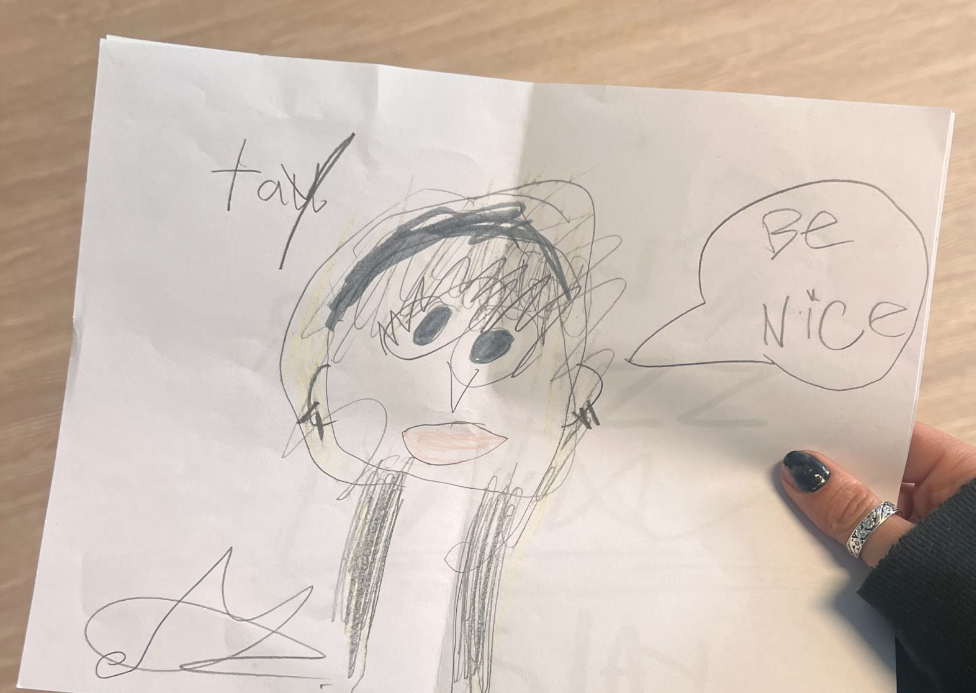Thinking Beyond Your “Why”
If you are in the business world, you have undoubtedly heard of Simon Sinek. Even if you have never read his books, you have probably watched one of...
6 min read
 Lauren Keller
:
Jul 30, 2025 8:34:12 AM
Lauren Keller
:
Jul 30, 2025 8:34:12 AM
.png)
A jeans advertisement just broke the internet, sent a stock soaring 16%, and revealed the precise coordinates of America's cultural fault lines.
If you think that sentence sounds unhinged, welcome to 2025, where Sydney Sweeney painting over "genes" to spell "jeans" on a Times Square billboard can simultaneously trigger eugenics discourse and meme stock mania.
We're not in Kansas anymore, Dorothy—we're in late-stage capitalism.
American Eagle Outfitters surged 10 per cent on Thursday after unveiling a new denim campaign with Sydney Sweeney, featuring the tagline "Sydney Sweeney Has Great Jeans."
The campaign, described as the company's biggest collaboration yet, includes 3D billboards, AI try-on technology, and a limited-edition "Sydney Jean" with proceeds benefiting Crisis Text Line (more on this in a bit).
Despite the controversy, the campaign caused American Eagle stock to spike by as much as 16%, transforming the retailer into the latest meme stock darling.
The mechanics are deceptively simple: actress discusses her genetics while modeling denim, charitable component provides moral cover, stock price explodes.
But strip away the corporate spin, and you're left with the most expensive game of cultural chicken American Eagle has ever played.
Let's do the critical reading American Eagle's creative team either ignored or hoped we'd miss.
Start with the casting choice, which isn't just about finding a pretty face. Sweeney embodies the specific phenotypical markers that eugenics movements historically elevated: blonde hair, blue eyes, thin frame, symmetrical features.
These aren't random beauty ideals—they're the visual codification of "genetic superiority" that justified centuries of racial hierarchy. The campaign literally centers her genetics as the product's primary selling point, making explicit what most beauty advertising keeps implicit.
The visual rhetoric goes deeper than surface aesthetics. When Sweeney discusses her "great genes" while the camera lingers on her body, we're watching the commodification of reproductive desirability.
The subtext isn't subtle: these genes are worth inheriting, this body is worth reproducing, this genetic lineage represents evolutionary success. It's the male gaze filtered through social Darwinism.
Fashion advertising has always sold genetic lottery winners as accessible through purchase, but this campaign makes the transaction explicit. It's not just "look like her"—it's "be genetically superior like her."
Pretty girl. Blue eyes. Sidelong glances. Body pans. Sultry voice-over about the basics of how genes get passed on over time.
Yep. We’ve actually seen that before.
In 1980, Brooke Shields appeared in a Calvin Klein campaign that's eerily similar to American Eagle's current effort. That ad featured Brooke discussing genetic codes, hereditary characteristics, and evolutionary processes while she was lying on the ground, squeezing into her jeans.
The narration explicitly referenced "survival of the fittest" and genetic superiority before connecting it all to Calvin Klein denim—the same genes/jeans wordplay American Eagle is using 45 years later.
We've been consuming this exact narrative for decades without questioning what it actually means. The Brooke Shields ad proves this reading was always there—we just weren't trained to see it.
American Eagle didn't invent this playbook; they just deployed it in a cultural moment where some of us finally have the vocabulary to call it what it is.
You might be thinking, yeah, yeah, but “sex sells.”
Even though that idea is trite, the recent spike in the American Eagle stock price also makes it unsettlingly true.
Let’s break it down.
As an actress, Sydney Sweeney is no stranger to hyper sexualization; it’s a calling card that AE exploits.
The campaign's sexual objectification reaches its most disturbing peak in one particularly moment where Sweeney explains that her body composition is determined by her genes as the camera deliberately pans to her breasts.
She then coyly says, "Hey! Eyes up here" and giggles—a choreographed acknowledgment of the objectification that somehow makes it worse, not better.
This isn't just tone-deaf; it's predatory marketing disguised as playful flirtation. American Eagle's core demographic is teenagers, yet they're deploying adult male fantasy tropes to sell denim.
The "eyes up here" moment is particularly insidious because it pretends to call out objectification while simultaneously performing it.
The contradiction becomes even starker when you remember that this campaign benefits domestic violence survivors. The charitable component starts to feel less like genuine advocacy and more like moral laundering for questionable creative choices.
The initial critical response came primarily from TikTok, where media-literate users immediately recognized the problematic implications.
People are saying, "Who approved this? In 2025, really? That's the best they could do?"
Comments flooded in questioning how an entire creative team, multiple executives, and countless stakeholders could review a campaign celebrating genetic superiority and hypersexualizing it for teenage consumers without anyone raising red flags.
But the responses to these critiques reveal something far more disturbing than corporate tone-deafness.
Meanwhile, in looking at the comments on YouTube, most are favorable and claim that the people who are criticizing the campaign are jealous, envious, and, in fact, must be ugly. And a good chunk of these comments are coming from…you guessed it…men.
The pattern is telling: genetic superiority messaging attracts defenders who immediately resort to... genetic superiority arguments.
Critics aren't raising valid concerns about eugenic undertones—they're just genetically inferior, physically unattractive, bitter about their own genetic lottery losses.
This response perfectly illustrates why the campaign is so insidious. It doesn't just sell genetic hierarchy; it creates one among its audience. Supporters aren't just defending an advertisement—they're defending their own position in a beauty-based caste system where criticism equals genetic inadequacy.
Even more telling is that some fans are praising her (Sydney) for "killing woke advertising" and, even more chilling, saying comments like "America is Back."
There's something genuinely sinister in that reception—the quiet part being said loud. When your campaign attracts enthusiastic support from people celebrating the return of genetic superiority messaging, maybe that should have been a creative red flag.
The sexuality component adds another layer of toxicity. The hypersexualized "great genes" narrative becomes a cultural permission slip to celebrate genetic superiority through sexual objectification.
"America is Back" translates to: we can return to openly celebrating white genetic supremacy packaged as aspirational sexuality without progressive interference.
The fusion of genetic hierarchy with sexual fantasy creates a particularly insidious form of ideological recruitment—one that feels like entertainment rather than indoctrination.
If by "work" we're talking about "profit," then the answer is complicated.
The initial market reaction proves the campaign's effectiveness regardless of interpretation. More than 13% of American Eagle shares available for trading are sold short, according to FactSet data, making it perfect meme stock material.
On July 24, 2025, AEO's stock price surged nearly 10% during regular trading hours and spiked over 17% in after-hours sessions, adding $400 million to its market capitalization.
But the euphoria could be short-lived. JP Morgan downgraded the stock as the cultural backlash intensified, suggesting that even Wall Street recognized the campaign's long-term reputational risks.
The math is still simple: triggered by the eugenic undertones? You're talking about it. Thrilled by the anti-woke messaging? You're sharing it. Seduced by Sweeney's star power? You're buying the jeans.
American Eagle created a cultural arbitrage opportunity, monetizing both outrage and approval simultaneously. The question is whether that arbitrage opportunity survives professional financial analysis.
In a lot of ways, actually.
Let’s break it down.
The Crisis Text Line partnership isn't just contradictory—it's potentially exploitative. By attaching domestic violence advocacy to hypersexualized genetic superiority messaging, American Eagle weaponizes a serious cause to deflect criticism. Try to critique the eugenic undertones, and you're attacking a campaign that helps abuse survivors.
This sets a dangerous precedent for how brands can deploy social causes. If you can shield questionable creative choices with charitable partnerships, then every controversial campaign becomes immune to criticism, which could set the stage for a new era of corporate accountability avoidance.
The "who approved this?" question reveals something more disturbing than individual oversight failures—it exposes how normalized eugenic thinking has become in corporate America. This campaign passed through multiple layers: creative teams, account management, legal review, executive approval, media planning, and market research.
At each stage, professionals with sophisticated cultural knowledge looked at genetic superiority messaging targeted at teenagers and said “yes.”
When entire corporate structures can't or won’t recognize eugenic messaging, we're not dealing with isolated blind spots; we're dealing with systemic ideological alignment.
American Eagle's campaign doesn't exist in isolation. It's part of a global rise in genetic determinism messaging coinciding with authoritarian movements worldwide.
From "great replacement" theory in Europe to genetic nationalism in Asia, we're seeing the rehabilitation of eugenic thinking across democratic societies.
American Eagle's success suggests that corporate America is either unconsciously reflecting or consciously capitalizing on this ideological shift.
Perhaps most troubling is what happens when American Eagle's core demographic—teenagers—internalizes this messaging.
We're talking about young people in critical identity formation stages consuming content that explicitly links genetic traits to social value. The long-term implications include increased body dysmorphia, reinforced racial hierarchies, and the normalization of genetic determinism among Gen Z.
This generation is already dealing with unprecedented mental health crises, social media comparison culture, and political polarization. Adding explicit genetic hierarchy messaging to that mix isn't just irresponsible—it's potentially devastating for individual and collective wellbeing.
The real crisis isn't American Eagle's campaign—it's our collective inability to read subtext without being dismissed as "too woke" or "reading too much into it."
We've created a false binary where acknowledging symbolism equals paranoia and dismissing it equals common sense.
But advertising doesn't work that way. Neither does culture.
When you're operating in a political moment where genetic superiority messaging has been mainstreamed, when you're casting according to very specific beauty standards, when you're literally painting over "genes" while discussing inheritance—you're making choices.
Those choices have meanings. And pretending otherwise is either willful ignorance or strategic gaslighting.
American Eagle crafted a campaign that works precisely because it operates in the gap between conscious and unconscious messaging—plausible enough to defend, loaded enough to generate reaction. They've mastered the art of cultural provocation while maintaining corporate deniability.
If we can't read the room on something this obvious, what chance do we have with subtler forms of cultural manipulation?
American Eagle just showed us how to monetize our critical thinking crisis. The question isn't whether they intended the eugenic reading—it's whether we're smart enough to recognize it, name it, and do something when we see it.
Your move, America.
.png)
If you are in the business world, you have undoubtedly heard of Simon Sinek. Even if you have never read his books, you have probably watched one of...

This winter, during a severe depressive episode, I mass-applied to an uncountable number of volunteer positions in my home city of Vancouver, BC.

One of the most healthy traits anyone can have is a well-developed ability to consider other perspectives.